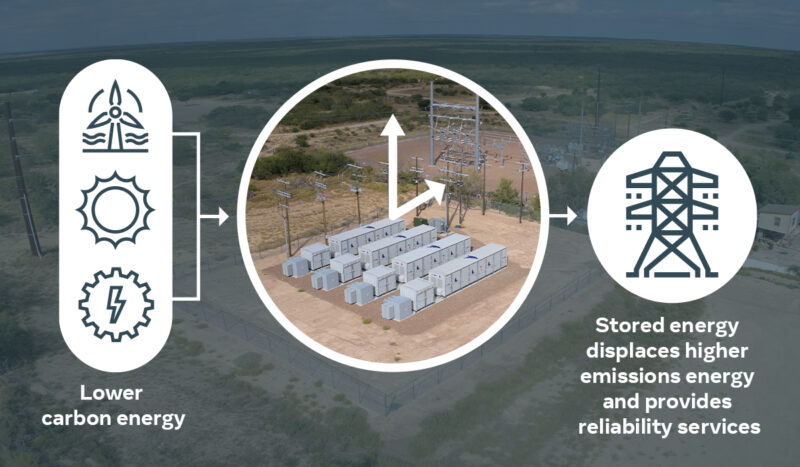September 14, 2022
The electrical grid is transforming as older, less efficient fossil fuel generation plants are closing and more wind and solar farms are added to the system.
Authored by John DeAngelis, Energy Manager, Meta
AN EXCERPT: The electrical grid is transforming as older, less efficient fossil fuel generation plants are closing and more wind and solar farms are added to the system. These changes, however, can introduce additional complexity to the system that requires new tools to help the grid transition reliably. Additionally, companies are attempting to reach net-zero emissions by reducing carbon emissions from their operations, removing greenhouse gases from the air, and partnering with others on specific projects to directly reduce air emissions. Increasingly, energy storage is being deployed to help address these challenges and improve grid reliability.
The global energy storage market could hit one terawatt-hour by 2030, according to the latest forecast from research company BloombergNEF. Energy storage has been deployed in the United States mostly to help balance the electricity system when there are short-term fluctuations in supply and demand. However, these energy storage projects are currently incentivized to maximize revenue, which at times can inadvertently increase system emissions.
In 2022, Meta along with our partner Broad Reach Power, launched a pilot to test how energy storage could reduce carbon emissions while continuing to help preserve a reliable electrical grid. Meta is working with industry leaders to study how emerging technologies like energy storage can support grid reliability and reduce emissions as we continue to build some of the most efficient and innovative data center facilities in the world.
Read the full article on Tech at Meta.
Return to the blog post main menu.


